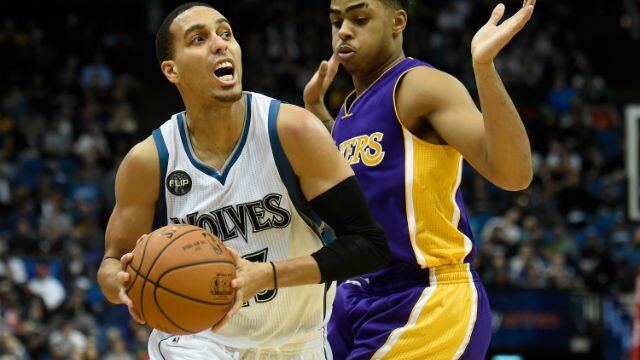
The regular season game that was expected to be a titanic showdown between two Western Conference giants ended up being extremely lopsided, with the San Antonio Spurs going down to the Golden State Warriors in a 120-90 defeat that was never close.
This loss came in the absence of Tim Duncan, the defensive anchor and calm leader of the black and silver. Even still, seeing the Spurs look so overwhelmed by the younger Warriors came as a major surprise to many — especially the way their league leading defense was sliced through so easily.
So what went wrong?
Early on, it was uncharacteristic turnovers. The first quarter was filled with so many passing mishaps that it seemed like the Spurs might have been trying to turn the ball over, attempting lobs into minimal spaces against long athletic defenders.
That only led to fast breaks. And when you have a Golden State team with an elite ball-handler and solid finishers at the rim, they’re going to score points in an up-tempo battle. That’s why they play the fastest pace in the league at 101.8 possessions per game.
The Warriors were able to keep that pace going, too, and there underlies the most threatening problem of all. The Spurs may sport the NBA‘s premier defense, but if the Warriors consistently have a 5 vs. 4 or a 4 vs. 3, then they might as well be playing on a court by themselves. Golden State’s ball movement is too sharp to miss an easy opening.
The Spurs attempted to lock the Warriors into a half-court offense by pressuring Stephen Curry with Kawhi Leonard as he made his way down the court. The problem with this tactic wasn’t necessarily that Leonard wasn’t good enough but that the rest of the Warriors team was too fast for the other Spurs on the floor.
By the time Leonard had gotten around the high screens set on him, the Warriors’ offense was already set and he was no longer a factor in the passing lanes or in help defense. The Spurs’ interior was left vulnerable and it led to openings for about every Warrior on the floor.
On the offensive end, speed mismatches again were detrimental to the Spurs. Draymond Green was able to close in on help defense without letting LaMarcus Aldridge get free because he was the faster, more physical player of the matchup. Without Duncan’s pertinent off-ball screens, the Spurs were unable to find the right passing lanes for much of the game.
While Duncan’s return could ease some of the qualms from last night, the Spurs may need to employ a smaller lineup to answer the Warriors for parts of their next matchup. Tony Parker, Manu Ginobili, Danny Green, Leonard and Boris Diaw could be an ideal squad.
Moving Leonard to power forward would tip the speedometer to the Spurs’ favor, meaning the offensive machine can run without having to worry about Draymond Green clogging passing lanes and the team can pressure Curry without sacrificing points inside.
All five players are three-point shooting threats that need to be watched closely, exactly what Leonard and Parker need to open the paint for their drives. The constant running back and forth between the paint and the three-point arc should strain the Warriors enough to slow their fast break down, too.
The small lineup may very well be something Gregg Popovich experiments with on March 19, when the two teams face off in the AT&T Center. There’s no doubt that adjustments will be made.
Until then, the Spurs have entrenched themselves in the NBA’s second place spot by every respectable measure.

























